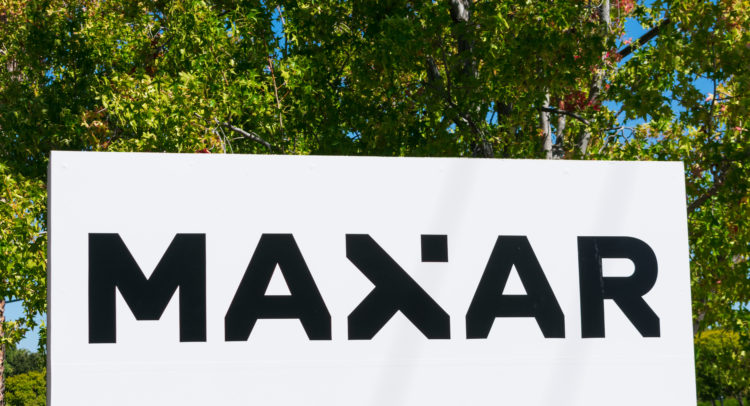Maxar Technologies (MAXR) (TSE: MAXR) provides space technology solutions such as satellites, robotics, Earth imagery, geospatial data, analytics, and insights. Its segments include Space Systems, Imagery, and Services.
Although analysts have a positive outlook on the company, they may be overly optimistic with their price targets, as the company doesn’t have a competitive advantage and is likely trading above its intrinsic value.
Does Maxar Have a Competitive Advantage?
There are a couple of ways to quantify a company’s competitive advantage using only its income statement. The first method involves calculating a company’s earnings power value (EPV).
Earnings power value is measured as adjusted EBIT after tax, divided by the weighted average cost of capital, and reproduction value (the cost to reproduce/replicate the business) can be measured using a company’s total asset value. If the earnings power value is higher than the reproduction value, then a company is considered to have a competitive advantage.
For Maxar Technologies, the calculation is as follows:
EPV = EPV adjusted earnings / WACC
$870 million = $87 million / 0.1
Since Maxar has a total asset value of $4.44 billion, it does not have a theoretical competitive advantage. In other words, assuming no growth for Maxar, it would require $4.44 billion of assets to generate $870 million in value over time, which is not ideal.
The second method to determine if a company has a competitive advantage is by looking at its gross margin because it represents the premium that consumers are willing to pay over the cost of a product or service. An expanding gross margin indicates that a sustainable competitive advantage is present.
If a company has no edge, then new entrants would gradually take away market share, leading to decreasing gross margins over time due to pricing wars.
In Maxar’s case, its gross margin has expanded in the past several years, going from 16.2% in Fiscal 2014 to 46% in the past 12 months. As a result, although Maxar doesn’t have a theoretical competitive advantage at the moment, it might be able to get there going forward if it can keep expanding its gross margin.
Valuation
To value Maxar, I will use a single-stage DCF model because its free cash flows are volatile and difficult to predict. For the terminal growth rate, I will use the 30-year U.S. Treasury yield as a proxy for expected long-term GDP growth.
My calculation is as follows:
Fair Value = 10-Year Average FCF Per Share / (Discount Rate – Terminal Growth)
$18.36 = $1.23 / (0.1 – 0.033)
As a result, we estimate that the fair value of Maxar is approximately $18.36 under current market conditions. With its current share price near $27, the stock is likely overvalued.
Risks
Moving on to risks, the most obvious risk is that the company appears to be overvalued at the moment, as it seems to be trading above its intrinsic value. Since Maxar has volatile free cash flows without a competitive advantage, it’s hard to argue that buying shares at this price will deliver strong gains to investors.
In addition, the company has a fairly high debt load, with total debt sitting at $2.3 billion. For reference, its market cap is only $2 billion. Although the company has no immediate default danger, it’s not very safe either. The interest coverage ratio is 1.6x (measured as EBIT divided by interest expense), which means that it can meet its obligations but doesn’t have much room for error.
Furthermore, there are other risks associated with the company. According to Tipranks’ Risk Analysis, Maxar has disclosed 51 risks in its most recent earnings report. The highest amount of risk came from the Finance & Corporate category.
The total number of risks has remained relatively flat over time, as shown in the picture below:

Wall Street’s Take
Turning to Wall Street, Maxar has a Moderate Buy consensus rating, based on five Buys, two Holds, and one Sell assigned in the past three months. The average Maxar price target of $38.86 implies 41.3% upside potential.

Final Thoughts
Maxar doesn’t seem like it would be a very attractive investment opportunity at this moment. Although it has the backing of Wall Street, the stock is overvalued without a competitive advantage. In addition, it has a high debt load while also producing volatile free cash flow. As a result, investors may want to look elsewhere for better opportunities.









